How to Make Sambal Paste, Use in Stellar Sambal Recipes
Sambal is a chile based paste and dipping sauce consumed with delight all over Eastern Asia, particularly in Indonesia, Malaysia and Thailand. There are many variations and many classic sambal recipe dishes. Sambal Goreng (which translates to 'fried sambal' in the Indonesian language), is a group of dishes that are prepared in a similar way. The sambal, either homemade or purchased, is fried briefly in hot oil to make aa aromatic spice paste called bumbu.
Sambal Oelek is an easy-to-make, delicious dip recipe. The term 'ulek' or 'oelek', and various other spellings, refers to the process of grinding the herbs and spices, using a mortar and pestle type device that’s used for making it in Asian countries. Sambal Oelek is a spicy dipping sauce, which is sweet and sour at the same time. The main ingredient is red chilies. Other ingredients include lemongrass, shallots, garlic, tamarind, sugar, ginger and vinegar.
Sambal is often used to cook tempe (or tempeh) which is a plant-based soy-protein product that originated in Indonesia. Tempeh is made from fermented soybeans that have been shaped into a block. Store bought tempeh often comes with additional grains and beans
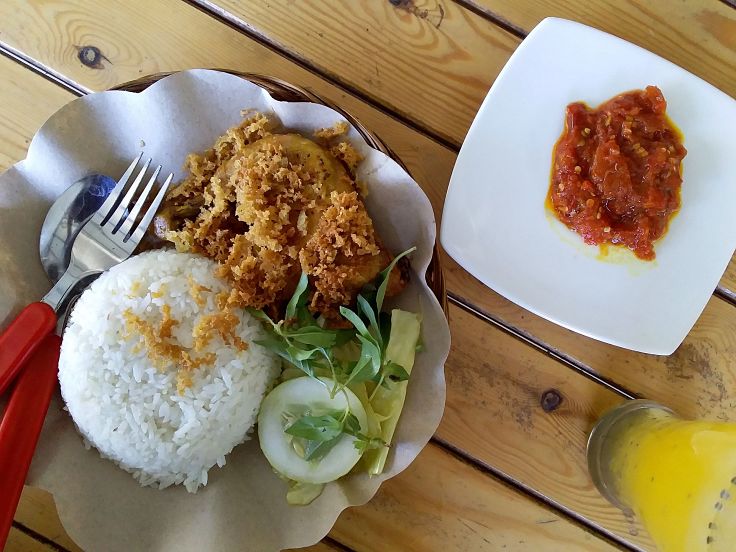
Homemade Sambal Oelek Recipe
Ingredients
- 2 garlic cloves
- 1 tablespoon salt
- 1 teaspoon lime juice
- 2 tablespoons rice vinegar
- 1 pound (500 g) red chili peppers, stems removed. (Thai chillies, red jalapenos, serranos, cayenne pepper)
Method
Place all of the ingredients into the bowl of a food processor or blender, or mortar and blender. Grind or pulse only until a course paste is formed. Do not process to a thin, runny paste. Strain out some of the excess liquid to keep the paste thick. Add to a jar and cover with a lid. Refrigerate until ready to use. Warm to room temperature before serving.
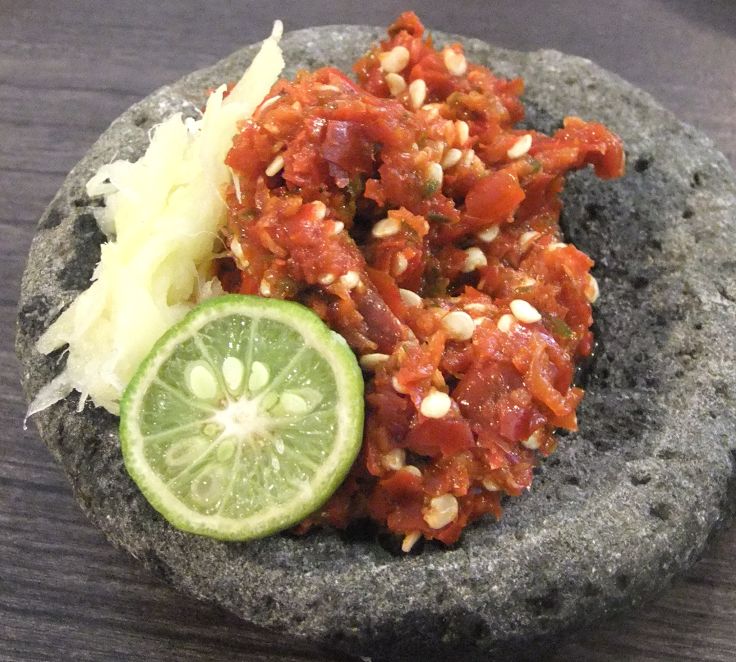
Malaysian Sambal Sauce Recipe
Ingredients
- 5 cloves garlic, crushed
- 2 tablespoons tamarind paste
- 1 tablespoon fish sauce, or to taste
- 5 tablespoons vegetable or canola oil
- 10 shallots (about 10 ounces), coarsely chopped
- 1 stalk lemongrass, soft inner part only, thinly sliced
- 1 (2-inch; 5 cm) piece galangal, peeled and coarsely chopped
- 3 tablespoons palm sugar (or 2 tablespoons packed brown sugar)
- 1 (2-inch; 5 cm) piece fresh turmeric, peeled and coarsely chopped
- 2 ounces (55 g) (about 45) fresh red Thai bird chiles, seeded for less heat and coarsely chopped
- 25 small dried red chiles, such as chile de arbol or Thai bird, seeded for less heat and soaked for 10 minutes in boiled water
Method
Add the lemongrass, hydrated dried chiles, garlic, turmeric, galangal, fresh chiles, and 2 tablespoons of water to the bowl of a blender or food processor. Pulse, in short bursts, scraping down the vegetables back into the bowl until a smooth paste is formed, (about 8 to 9 minutes). Then, add the shallots and pulse several times, until the paste is just well combined, leaving the small shallot pieces clearly visible (about 1 minute extra).
Next, heat the oil in a heavy, medium-size nonstick frying pan wok or pan over very low heat. When the oil is just moderately hot, add the paste mixture and cook, while stirring regularly, until the paste becomes fragrant (about 8-10 minutes). Then, add the tamarind paste, fish sauce and palm sugar. Keep cooking the paste over very low heat, stirring occasionally. Cook until the sugar melts and the solids in the mixture start to separate from the oil (about 5-7 minutes). Remove from the heat and serve immediately, or let cool, and refrigerate in a glass jar with a lid.
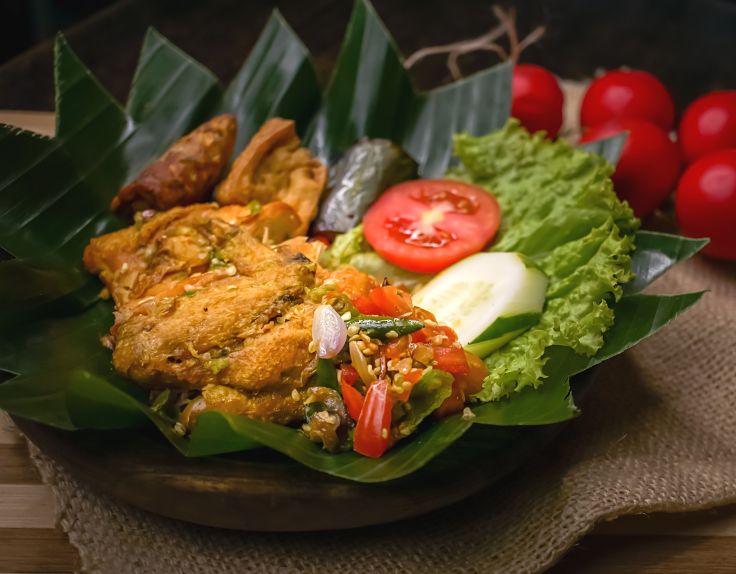
Homemade Sambal Oelek Recipe with Garlic and Lime
Ingredients
- 3/4 cup vinegar
- 1 lb (500 g) red chile
- 8 ounces (250 g) sugar
- 1 tablespoon lime zest
- 1/2 teaspoon of salt, to taste
- 5 1⁄2 ounces (125 g) garlic, peeled and chopped
- 2 stalks lemongrass, thinly sliced (white part only)
- 5 1⁄2 ounces (125 g) tender young ginger, peeled and chopped
Method
Blend the ginger, chillies, garlic and lemon grass in a blender, food processor or using a mortar and pestle. Then, while processing drizzle in the vinegar.
Next, transfer the pureed mixture into a medium-size saucepan and bring the pan to a boil. Lower the heat and simmer gently for 3-4 minutes. Add the sugar and stir the mixture until dissolved. Then, add the lime zest and lime zest, taste and add more if required. Remove the pan from the heat, allow to cool and transfer the mixture to sterilised jars. Cool and seal with lids, and store in the refrigerator.
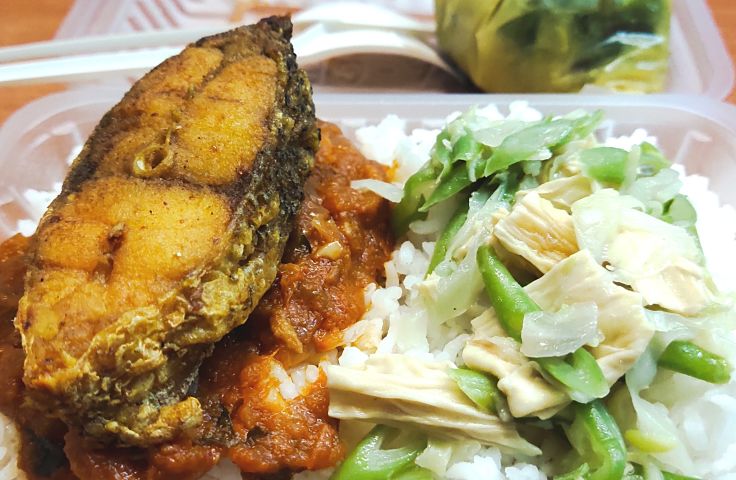
Balinese Style Grilled Chicken and Coconut Sambal
Ingredients
- 1 free range chicken, butterflied
- steamed rice, to serve
For the Marinade paste
- 3 bird's eye chillies
- 3 garlic cloves, peeled
- 2 tablespoons fish sauce
- 2 tablespoons kecap manis
- 4 tablespoons vegetable oil
- 2 red Asian shallots, peeled
- 1 tablespoon grated palm sugar
- 1/2 teaspoon freshly ground white pepper
- 5 cm (2 inch) piece fresh turmeric, peeled
For the Coconut sambal
- 1 lime, juiced
- 1/4 desiccated coconut
- 1 tablespoons fish sauce
- 1 tablespoons vegetable oil
- 2 bird's eye chillies, thinly sliced
- 2 makrut lime leaves, finely shredded
- 3 red Asian shallots, peeled and thinly sliced
Method
Make the paste by transferring place all the ingredients, except for the fish sauce, oil and kecap manis into a mortar and pestle. Pound and grind the mixture into a thick paste. You can also use a food processor to make the paste. Next, transfer the paste to a large mixing bowl. Add the fish sauce, oil and kecap manis. Taste the paste and adjust to ensure the flavours are well balanced.
Preheat a charcoal grill, oven grill, griddle plate or a barbecue over moderate heat. Next, pat the chicken dry using paper towels. Then, rub the marinade all over the chicken, including under the skin if you can. Cover the bowl and refrigerate for 3-4 hours minimum, or better still overnight. Then, remove the excess marinade from chicken, reserving the marinade for brushing while grilling. Place the chicken, bone-side down on the grill you are using and cook for 20-28 minutes or until chicken is nearly cooked through. Brush regularly while cooking with the marinade, Turn the chicken over and cook the skin-side. Brush with marinade as it cooks. keep cooking until the skin side is golden brown in color and lightly charred.
Next, make the coconut sambal by transferring all the ingredients into a bowl and stir thoroughly until it is well combined. Prior to serving, cut the chicken into smaller pieces and serve with the coconut sambal, fresh herbs, chilli slices and steamed rice.
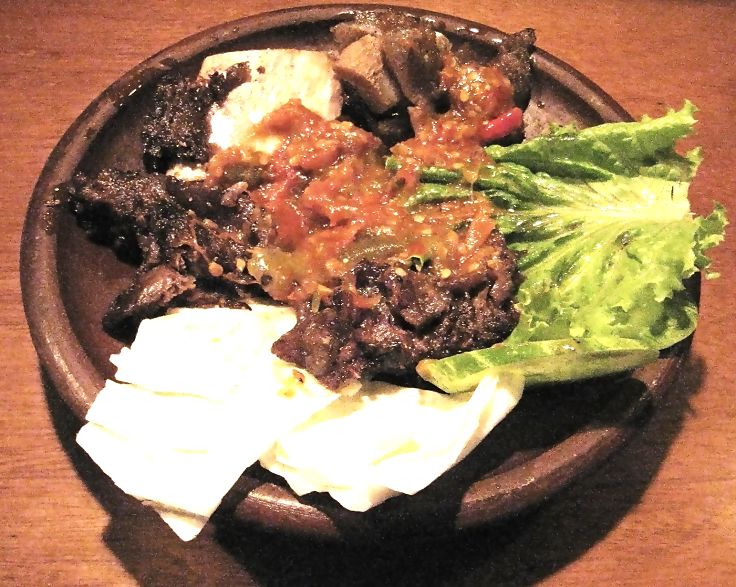
Grilled Fish with Homemade Sambal Matah, Hijau and Balado
Ingredients
- 1 1/2 teaspoons salt
- 1 teaspoons vegetable oil
- 6-8 makrut lime leaves, torn
- 2 large pieces banana leaf, washed
- lime wedges and steamed rice, to serve
- 3 stalks lemongrass, white part only, bruised
- 1 large firm, white flesh, fish such as snapper (1.5 kg; 3 pounds; cleaned)
For the Sambal balado
- 1 lime, juiced
- 1 tomato, chopped
- 2 tablespoons salt
- 3 tablespoons sugar
- 3 tablespoons vegetable oil
- 6 red Asian shallots, chopped
- 300 g (10 oz) long red chillies, stems removed, coarsely chopped
For the Sambal hijau
- 1 teaspoons salt
- 1 tablespoons sugar
- 6 red Asian shallots
- 1 tablespoons vegetable oil
- 10 makrut lime leaves, torn
- 1 large lime, zested and juiced
- 3 green tomatoes (about 200 g; 7 oz), chopped
- 3 lemongrass stalks, white part only, bruised
- 4 green bird's eye chillies, stems removed, coarsely chopped
- 300 g (10 oz) large green chillies, stems removed, coarsely chopped
For the Sambal matah
- 1 lime, zested
- 1 tomato, chopped
- 1/2 teaspoons salt
- 1/2 teaspoons sugar
- 1 garlic clove, chopped
- 1 tablespoons lime juice
- 4 red Asian shallots, chopped
- 10 g (1/3 g ) belacan (shrimp paste)
- 1 lemongrass stalk, white part only, chopped
- 4 red bird's eye chillies, stems removed, chopped
Method
To make the sambal balado, add the shallots and tomatoes to the bowl of a food processor and blitz for about 5-7 seconds. Then, add the chillies and pulse, only until a coarse paste forms. Heat the oil in a heavy frying pan or wok over low-moderate heat. Add the paste, sugar and salt. Cook, stirring regularly for 10-17 minutes or until the paste thickens and the colour has changed to a deep red color (not brown). Stir in the lime juice and taste. Adjust the seasoning with extra salt or sugar as required. Transfer the sambal to a bowl and set aside.
For the sambal hijau, place the shallots, chillies and green tomatoes into the bowl of a food processor and pulse to form coarse thick paste. Heat the oil in a heavy frying pan or wok over low-moderate heat. Add the lemongrass, paste and lime leaves and fry, stirring regularly for about 5 minutes. Add the lime juice and zest, with the sugar and salt and fry for another 8-10 minutes or until the liquid in the pan has evaporated. Remove and discard the lime leaves and the lemongrass. Adjust the seasoning as required, transfer to a small bowl and set aside.
To make the sambal matah, add the shrimp paste to a small deep frying pan and dry-fry over moderate to low heat or 3-4 minutes until toasted and fragrant. Then, place the chillies, garlic, shallots and lemongrass into a mortar and pestle. Pound the ingredients to a thick paste. Add the remaining ingredients and pound until a smooth paste. Transfer to a bowl and set aside.
Pre-heat your chargrill, barbeque hot plate, grill or griddle over moderate to high heat. Rinse the fish well using lots of cold running water. Then, pat dry thoroughly with paper towels. Rub inside the cavity of the cleaned fish with plenty of salt. Add the makrut lime leaves and lemongrass into the cavity. Next, make 3-4 diagonal slashes across both sides of the fish. Rub 1/2 teaspoon of salt all over each side of the fish. Next, rub the oil all over the fish and wrap in the banana leaves. Cook for 12-17 minutes on each side or until the fish is just cooked through. Serve the fish with steamed rice, the three sambals on the side. Top with lime wedges and fresh herbs.

Simple and Spicy Malaysian Style Sambal Fish (Sambal Ikan)
Ingredients
- 1/2 teaspoon salt
- lime halves, to serve
- steamed rice, to serve
- 1 teaspoon ground turmeric
- vegetable oil, for cooking
- steamed Asian greens, to serve
- 600 g (21 oz) firm white fish fillets
For the Sambal
- 1 tablespoon tamarind pulp
- 2 1/2 tablespoons vegetable oil
- 1 red onion, sliced into thin rings
- 1 1/2 tablespoons shaved palm sugar
- 4 cloves of garlic, peeled and chopped
- 250 g (9 oz) ripe tomatoes (about 2), chopped
- 2 1/2 teaspoons shrimp paste (belacan), chopped
- 16 medium-size dried chillies, stem ends removed
- 150 g (5 oz) large brown shallots (about 4), peeled and chopped
Method
Prepare the sambal by cutting each chilli in half length-wise and removing most of the seeds. Then, place the chillies in a bowl, just cover with boiling water and let stand for 20-30 minutes or until the chillies soften. Then, drain the chillies well and set aside. Then, transfer the tamarind pulp to a small bowl, pour over 1/3 cup of boiling water. Set aside for 15-20 minutes until the tamarind softens. Then, strain the tamarind mixture through a sieve into a bowl, pressing the solids against the sieve to extract as much liquid as possible. Then, discard the solids and set the tamarind puree aside.
Next combine the drained chillies in a food processor with the shallots, tomato, garlic, belacan and sugar. Pulse in short bursts to form a coarse paste. Then, heat the oil in a wok or Dutch oven over moderate heat. Add the chilli mixture to the pan and fry, stirring regularly, for about 12-14 minutes or until almost all of the liquid has reduced. Stir in the sugar and onion and cook, stirring frequently, for about 5 minutes. Next, mix in the tamarind puree. Taste and season with sea salt and freshly ground black pepper as required. Then, cook the sambal, while stirring, for an additional 5 minutes until the mixture is thickens. Set aside and keep warm.
Meanwhile, prepare the fish by drying thoroughly with paper towels. Combine the salt and turmeric in a bowl, and then rub the mixture all over both sides of the the fish. Heat the oil in a Dutch oven or a large, heavy-based frying pan over moderate-high heat until hot. Then, add the fish and fry each side for 3 minutes or until golden brown in color and cooked through. Place the fish on a warmed serving dish, Spoon the sambal mixture over each piece of fish and top with fresh herbs. Serve with steamed rice and lime wedges.
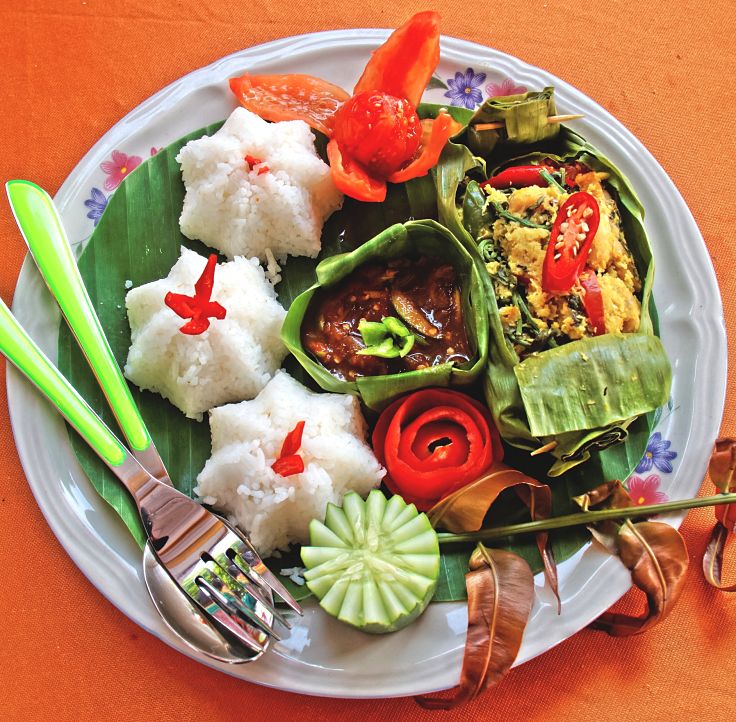
Indonesian Sambal Bajak Recipe
Ingredients
- 4 garlic cloves
- 1 teaspoon salt
- 2 makrut lime leaves
- 2 teaspoons lime juice
- 1 tablespoons palm oil
- 50 g (2 oz) tamarind paste
- 150 ml (5 fl oz) boiling water
- 2 teaspoons terasi (shrimp paste)
- 25 g (1 oz) peeled ginger, chopped
- 4-6 red or green birds-eye chillies
- 25 g (1 oz) peeled galangal, chopped
- 1 tablespoons finely grated palm sugar
- 4 spring onions (scallions), white part only
Method
Place the tamarind paste in a small metal bowl, just cover it with boiling water and let stand until cool. Then, strain the mixture throughout a fine strainer, squeezing the tamarind pulp to extract as essence as possible. Discard the woody fibres of the tamarind and seeds, reserving the liquid. Next, Place the spring onion, galangal, chillies, ginger, salt, garlic, juice and lime leaves into a mortar bowl. Grind with the pestle to form a coarse paste. Add the terasi and sugar and grind again until well combined. Next, heat the palm oil in a heavy deep frying pan or wok over moderate to high heat. When hot, add the chilli paste and stir-fry for about 2-4 minutes until fragrant. Blend in the tamarind liquid and simmer gently until the liquid is reduced by half. Store in a sealed jar in the refrigerator.
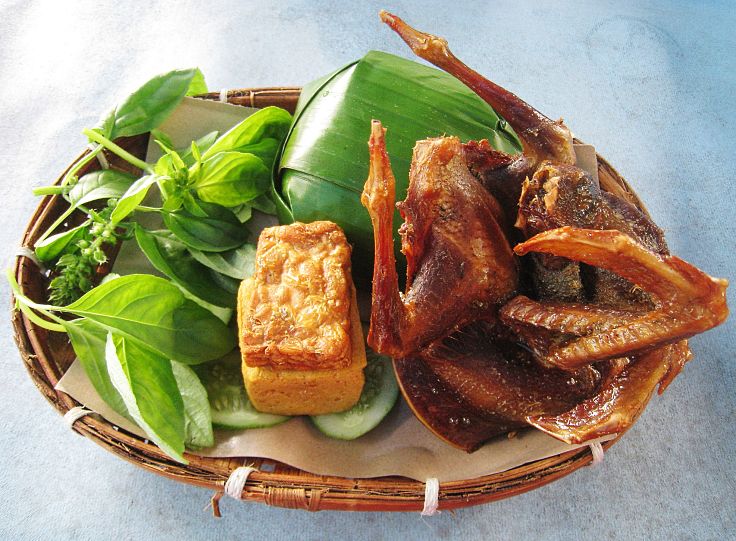
Caribbean Style Green Bean Sambal Recipe
Ingredients
- 3 garlic cloves
- sea salt, to taste
- 2 teaspoons lemon juice
- 3-4 teaspoons chilli paste
- 2 teaspoons light olive oil
- 1/2 red onion, thinly sliced
- 1 teaspoons grated lemon rind
- 2.5 cm (1 inch) piece ginger, peeled and finely chopped
- 160 g (6 oz) small green runner beans, topped and tailed
Method
Grind the garlic with the ginger in a mortar and pestle to form a smooth paste. Transfer to a small bowl and stir through the chilli paste. Next, heat the oil in a wok or small non-stick, heavy metal frying pan over medium to high heat. Add the ginger and beans mixture, and cook for 1-3 minutes. Add the onion and cook for an additional minute or two. Then, remove from the heat and stir through the lemon rind and juice. Season with sea salt and black pepper to taste and serve immediately.
Squid Sambal Recipe (sambal tumis sotong)
Ingredients
- 8 dried red chillies
- 1/3 cup vegetable oil
- 2 teaspoons chopped ginger
- 2 teaspoons dark soy sauce
- 2 tablespoons grated palm sugar
- 4 garlic cloves, roughly chopped
- 800 g (28 oz) whole squid, cleaned
- 2 teaspoons shrimp paste (belachan)
- 250 g (8 oz) cherry tomatoes, halved
- lime wedges and nasi kunyit, to serve
- 10 Asian red eschalots, roughly chopped
- 2 red bird’s-eye chillies, roughly chopped
- 1 tablespoons tamarind pulp (block form) (see Note)
- 1 lemongrass stalk, white part only, roughly chopped
Method
Soak dried chillies, just covered in boiling water for 25-30 minutes, until softened, and then drain. Wrap shrimp paste in foil and cook in a Dutch oven or small, heavy-based frying pan over moderate heat for 3-4 minutes on each side. Remove from the foil when cooked, and place in a food processor with the ginger, lemongrass, eschalots, bird’s-eye chillies and garlic. Process to a smooth paste and then set aside. Then, soften tamarind pulp in a little boiling water in a small bowl for 15-20 minutes. Strain and squeeze the tamarind pulp through a fine sieve into a bowl. Discard the solids and retain the tamarind liquid. Add the sugar and soy sauce and stir to dissolve all the sugar.
Slice the squid into 5 cm x 2.5 cm (2 inch x 1 inch) pieces. Slice long tentacles in half. Then, heat the oil in a large wok or deep frying pan over moderate to high heat. Add the prepared chilli paste and cook, while stirring, for 1-2 minutes or until fragrant. Add the squid and stir-fry for 3 minutes or until the squid is almost tender, then spoon in the tamarind mixture. Cook, while stirring regular, for an additional 2 minutes or until the squid just starts to soften. Remove the squid and transfer to a bowl and set aside. Bring the liquid to the boil, then cook for 3-4 minutes or until the liquid reduces and thickens. Return the squid to the wok or pan. Add the tomatoes, and toss to coat. Season with salt and freshly ground black pepper. Serve with lime, fresh herbs and nasi kunyit (turmeric rice).